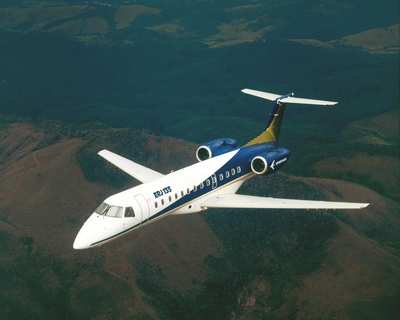Wed, Oct 26, 2011
Ten Reasons Why Government Proposals Will Kill Small Community
Air Service
By William Swelbar
I’ve been on the road for six weeks, traveling to
communities large and small to discuss the grim future of small
community air service in the face of economic pressures on regional
airlines.
William Swelbar

Those pressures only begin with jet
fuel at a price equivalent of $120 per barrel, but the factors are
many. They include the reality that:
- There are no aircraft of 50 seats or less in the production
pipeline
- All regional flying contracts will come up for bid between now
and 2017 and likely will not be renewed by the mainline
carriers
- Low Cost Carriers in a regional market’s catchment area
are drawing traffic to larger airports at the expense of smaller
airports
- A growing pilot shortage will hurt the regional carriers first
as regional pilots will find work on the mainline
- Proposed FAA flight time/duty time regulations that put new
limits on pilot flying hours will force regional carriers to hire
more pilots to do the same amount of flying the sector is doing
today
- Congress, in a questionable response to the Colgan crash,
passed a law requiring 1500 hours of training time for a commercial
pilot
- Most manufacturers won’t produce commercial airplanes
smaller than 100-seats as most airlines can’t afford to
sustain many routes with smaller planes
- Negotiations between mainline pilots and management over new
scope language is as emotional and contentious as it has ever
been.
- Proposed tax increases certain to punish the smallest of
markets.
The Administration’s 2012 budget proposal already levies a
$100 fee for every airplane departure in controlled airspace,
costing passengers and the industry more than a billion dollars a
year. It also seeks to double the “security tax”
paid by passengers to $5 per one-way trip, and triple the tax to
$7.50 by 2017. The total price tag for that proposal: $25
billion – $15 billion of which would be diverted for deficit
reduction. The proposals together will cost passengers and the
industry $36 billion over the next 10 years.

Air Transport Association of America
CEO Nicholas Calio (pictured) said it best when he said Washington
is treating the airline industry like it treats alcohol and
cigarettes – taxing the hell out of it as it does with
“sin taxes” as if Congress actually wanted to
discourage flying. While I assume that’s not the
government’s intent, it may well be the result.”
I do find it ironic that the government is seeking to tax an
industry an incremental $36 billion over the next ten years after
it lost $65 billion over the past ten years. But I
digress.
Let’s not forget that the airline industry ranks as the third
greatest producer of economic activity in the US. In my view,
there is no way the industry can absorb these financial and
regulatory pressures imposed by Congress without negatively
impacting airlines and their role in driving economic activity. And
the industry’s first response would be to remove marginal
capacity from the system of production. Where will they look
to trim capacity even further – San Francisco to New York or
Cincinnati to Des Moines?
Of course, airlines might try to pass new costs onto passengers,
just as most industries do when faced with higher costs and limited
opportunities for expansion. In this market, however, it is hard
enough to simply add a few bucks to the price of a ticket to cover
the rising cost of oil. Imagine the impact of trying to pass
on costs that will total billions at a time business and leisure
travelers are counting pennies.
Typically, excise taxes like sin taxes work best in industries that
have more control over the pricing. That is not the case in the
airline industry. Sin taxes are most successful on industries
that produce products with price inelastic attributes. The
airline industry can hardly be termed an industry that produces a
product with inelastic characteristics.
The ATA estimates the proposed taxes would lead to a 2.3 percent
reduction in capacity at a possible cost of 9,700 airline and
related jobs – and that’s just the impact from a tax
increase. Still unknown is the cost of the other factors
outlined above, which alone would inevitably lead to fewer flights
and fewer routes flown.

The mainline will hurt some. With fewer
regional jets feeding the big carriers, how many larger aircraft do
we need? Some traffic will be captured at airports that
continue to receive service within the catchment area of an airport
losing service - but not all. Some traffic may find its way
onto competitor aircraft. And some demand may fall out of the
system entirely. In any instance, overall demand will suffer
over the long term as marginal supply is removed from the
system.
But the brunt of the damage will be felt in the small communities
that rely heavily on regional carriers.
One of the things that bothers me most about Washington’s
view of the airline industry is the clear bias in favor of the so
called low cost carriers. These airlines have been brilliant
in cherry-picking profitable routes and creating networks designed
for profitable flying. But it was the legacy carriers, not the
LCCs, who invested in the assets to serve the nation’s
smallest airport markets and sustained routes that, were subsidized
by other flying. It is the network carriers that keep small
markets connected to the global air transportation grid.
Unfortunately, the economics serving all these small cities are
fast eroding because of factors the airlines don’t control,
oil costs at the top of the list. But the lawmakers and regulators
should step back and fast and realize how their well-meaning
proposals could result in a loss of service to small markets across
the nation. The politicians will probably find a way to blame
the airlines for cutting service while the real blame falls with
those proposing “easy” fixes now that will do
far-reaching economic damage in the future.
This article was reposted in its entirety with the
permission of the author. William S. Swelbar is a Research Engineer
in the Massachusetts Institute of Technology’s International
Center for Air Transportation, where he is affiliated with the
Global Airline Industry Program and Airline Industry Research
Consortium.
More News
From 2023 (YouTube Versions): Flying Motorcycle, That Is… "First Flight was achieved under cloudy skies but calm winds. The Samson Sky team, positioned along the runway, wat>[...]
A Few Questions AND Answers To Help You Get MORE Out of ANN! 1) I forgot my password. How do I find it? 1) Easy... click here and give us your e-mail address--we'll send it to you >[...]
Discrete Code As used in the Air Traffic Control Radar Beacon System (ATCRBS), any one of the 4096 selectable Mode 3/A aircraft transponder codes except those ending in zero zero; >[...]
Beyond Visual Line Of Sight (BVLOS) The operation of a UAS beyond the visual capability of the flight crew members (i.e., remote pilot in command [RPIC], the person manipulating th>[...]
Aero Linx: Florida Antique Biplane Association "Biplanes.....outrageous fun since 1903." That quote really defines what the Florida Antique Biplane Association (FABA) is all about.>[...]
 Classic Aero-TV: The Switchblade Flying Car FLIES!
Classic Aero-TV: The Switchblade Flying Car FLIES! ANN FAQ: Q&A 101
ANN FAQ: Q&A 101 ANN's Daily Aero-Term (04.12.24): Discrete Code
ANN's Daily Aero-Term (04.12.24): Discrete Code ANN's Daily Aero-Term (04.13.24): Beyond Visual Line Of Sight (BVLOS)
ANN's Daily Aero-Term (04.13.24): Beyond Visual Line Of Sight (BVLOS) ANN's Daily Aero-Linx (04.13.24)
ANN's Daily Aero-Linx (04.13.24)





